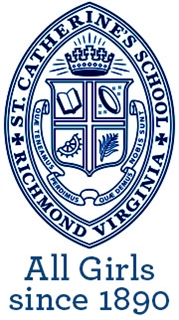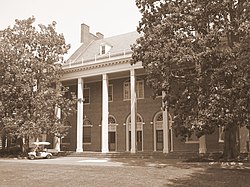This article has multiple issues. Please help improve it or discuss these issues on the talk page . (Learn how and when to remove these messages)
|
| St. Catherine's School | |
|---|---|
 | |
| Address | |
 | |
6001 Grove Avenue , 23226 United States | |
| Coordinates | 37°34′16″N77°31′17″W / 37.57111°N 77.52139°W |
| Information | |
| Type | Private, day, college-prep |
| Motto | Quæ Teneamus Perdimus, Quæ Demus Nobis Sunt (Latin) (What we keep we lose; what we give remains our own.) |
| Denomination | Episcopal |
| Established | 1890 |
| Oversight | Episcopal Diocese of Virginia |
| Head of school | Cindy L. Trask |
| Teaching staff | 103.5 (on a FTE basis) |
| Grades | Early Learners (age 3)–12 |
| Gender | Girls |
| Enrollment | 978, including 30 junior kindergarten (2016-17) |
| Student to teacher ratio | 9.1 |
| Color(s) | Gold and white |
| Athletics conference | Virginia Independent Schools Athletic Association |
| Nickname | Saints |
| Rival | The Collegiate School |
| Yearbook | The Quair |
| Website | www |
| [1] | |
St. Catherine's School | |
 | |
| Location | 6001 Grove Ave., Richmond, Virginia |
| Area | 14.9 acres (6.0 ha) |
| Built | 1917 |
| Architect | Hobart Upjohn |
| Architectural style | Colonial Revival |
| NRHP reference No. | 07000400 [2] |
| VLR No. | 127-5886 |
| Significant dates | |
| Added to NRHP | May 04, 2007 |
| Designated VLR | March 7, 2007 [3] |
St. Catherine's School is an independent Episcopal diocesan school in Richmond, Virginia, USA. It is the oldest private, all-girls school in Richmond and the only independent all-girls school in Virginia for age 3 to grade 12. St. Catherine's is the sister school to St. Christopher's. The school was listed on the National Register of Historic Places and the Virginia Landmarks Register in 2008.



